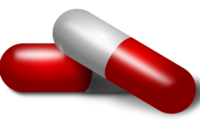A lot of attention has been paid to genetics in breast cancer as disease rates rise, but most women have no family history of the disease, suggesting that there is an environmental risk we don’t yet understand, says environmental health scientist Laura Vandenberg in the School of Public Health and Health Sciences at the University of Massachusetts Amherst.
Who's at higher risk?
Now she is launching a three-year, $450,000 research program supported by a National Institutes of Environmental Health Sciences (NIEHS) early career award to investigate the possibility that exposure to estrogen or estrogen-like chemicals in the womb may be a factor. “We already know that the major known risk factor in breast cancer is exposure to estrogen, so girls who enter puberty earlier and women who enter menopause later have higher risk,” she says.
Vandenberg’s investigation will focus on an estrogen-mimicking chemical called bisphenol S (BPS), related to bisphenol A (BPA) and now often used in plastics, thermal receipts, food packaging and other products instead of BPA.
"Environmental insults"
“There are hundreds of papers now on BPA and we have reached the point where there is enough evidence to conclude that it mimics estrogen,” she notes. “In order to say a product is BPA-free, manufacturers have begun to use BPS instead. It is almost entirely unstudied, but a few studies suggest it also acts like an estrogen. We need evidence for each chemical to make decisions about them, and studying these compounds also helps us to better understand how hormone-sensitive organs develop and respond to environmental insults.”
“Most studies have focused on estrogen exposure during puberty and adulthood, but a handful of studies suggest exposure to natural or synthetic estrogens in the womb can increase breast cancer risk,” Vandenberg says. “Unfortunately, just a little bit goes a long way here. For example, girl twins have a higher estrogen exposure in utero, as do the fetuses of women who keep taking birth control pills before they realize they are pregnant. It is a tiny amount, but important.”
"Primed in the womb"
Such data suggest that mammary tissue as it develops during gestation is not just sensitive, but is being primed in the womb for disease that appears decades later, Vandenberg says, “and we want to know how.” One of the unusual aspects of her study is that she will investigate possible exposure effects in both male and female mammary tissue.
As part of this NIEHS-sponsored research program, Vandenberg has assembled a team of experts with whom she will study, allowing her to take not only tissue- and cell-based approaches to study effects of chemicals on mammary glands, but also to use surgical, endocrine and molecular tools. The team includes R. Thomas Zoeller, an expert in developmental endocrinology and endocrine-disruptors, and D. Joseph Jerry, an expert on the intersection of hormones and genetics, both at UMass Amherst.
Vandenberg will also study with Suzanne Fenton of NIEHS using the mammary gland to examine environmental toxicants, and Susan Nagel of the University of Missouri to examine endocrine disruptor screening methods and chemical mixtures.







